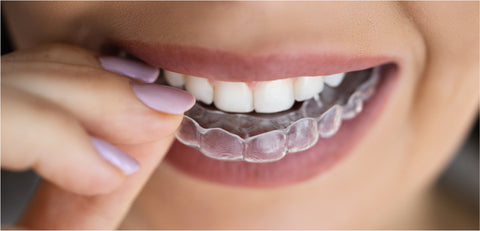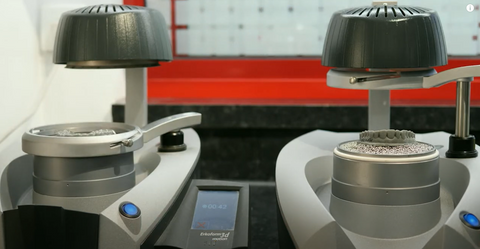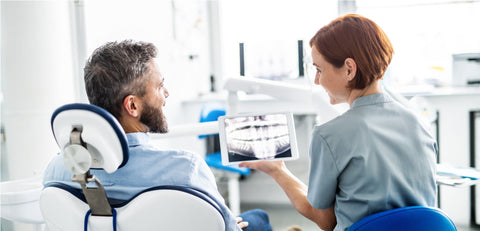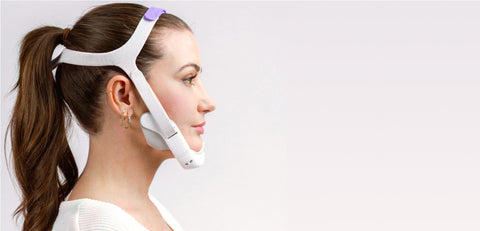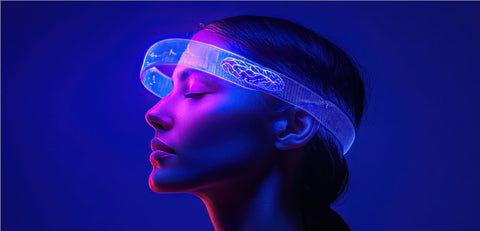Bruxism, or the involuntary grinding and clenching of teeth , is a common disorder that affects approximately 10 to 15 percent of the adult population. Often linked to stress, anxiety, or dental occlusion issues, bruxism can lead to premature wear of tooth enamel, jaw pain, headaches , and sleep disturbances . Among the treatment options, occlusal splints are a prominent choice for protecting teeth and relieving symptoms. However, these devices also have limitations that should be carefully considered. In this comprehensive guide, we take an in-depth look at the role of bruxism splints , their pros and cons, and promising innovations like Bruxless .
Introduction to Bruxism and the Importance of Splints
What is bruxism?
Bruxism is a disorder characterized by involuntary, repetitive clenching or grinding of the teeth , primarily during sleep. It can lead to premature wear of tooth enamel, jaw pain, headaches , sleep disturbances , and even damage to the gums or facial muscles . Although the exact causes of bruxism are not always clear, stress, anxiety, and dental occlusion problems are often cited as contributing factors.
Occlusal splints , also called bruxism splints or occlusal release splints , are removable devices designed to create space between the upper and lower teeth. By preventing direct contact between the occlusal surfaces, these splints protect the teeth from excessive wear caused by repetitive grinding and clenching. They can be thermoformed (“off-the-shelf” splints) or custom-made , made by a dentist or laboratory from impressions of the patient ’s mouth .
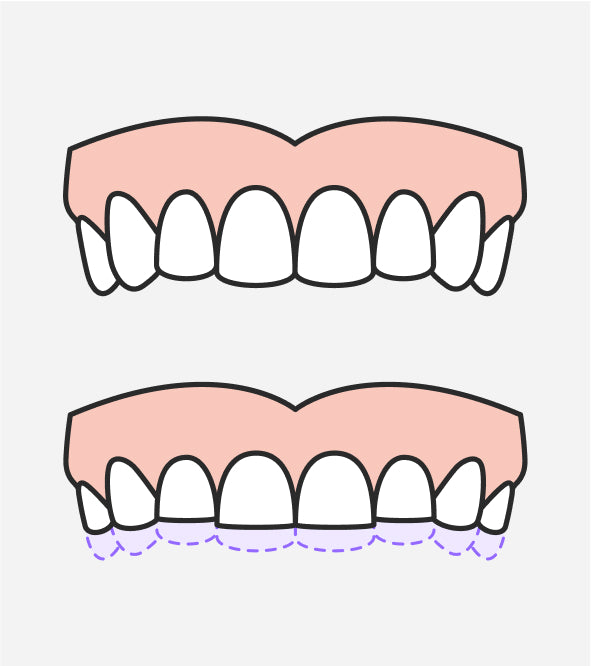
Types and Characteristics of Gutters
Thermoformed Gutters
Thermoformed aligners are ready-made devices, usually made of plastic or silicone, that can be heated and bitten into a rough shape to fit your teeth. While more affordable and readily available, these aligners tend to be less precise and comfortable than custom-made models.
-
Custom gutters
Custom-made aligners, on the other hand, are made by a dentist or dental lab from detailed impressions of the patient 's mouth . They provide a perfect fit, better comfort, and optimal protection against tooth wear . However, they are usually more expensive than thermoformed aligners.
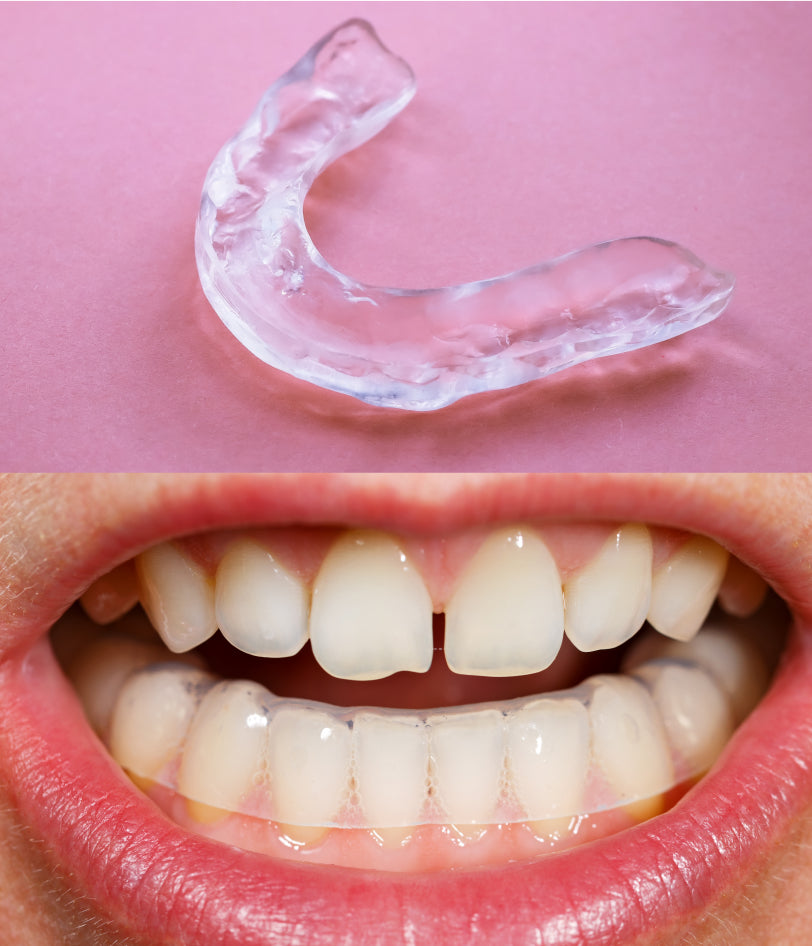
Materials Used
Occlusal splints can be made from a variety of materials, each with advantages and disadvantages in terms of durability, comfort, and hygiene. Soft silicone is popular for its flexibility and ease of care, but it tends to wear out more quickly. Hard acrylic is more resistant to wear, but may be less comfortable to wear . Some high-end models even use high-performance materials like polyethylene or polycarbonate.
High or Low - Gutter Choice
A common question is whether to wear the occlusal splint on the upper or lower arch. In reality, this choice depends on several factors, including the patient 's facial morphology, their dental occlusion type, and their age. An experienced dentist or orthodontist is best placed to determine the most appropriate option on a case-by-case basis.
Overall, upper jaw ( top teeth ) aligners are often preferred because they are generally better tolerated and less likely to become dislodged during sleep. However, for some patients, a lower jaw ( bottom teeth ) aligner may be more effective.
Anterior Gutters (NTI)
An alternative to traditional occlusal splints is the anterior splint or NTI (Nociceptive Trigeminal Inhibition), which covers only the anterior teeth . One study compared the effectiveness of the NTI splint to that of a full occlusal splint in 10 participants aged 23 to 39 years. The results showed a significant decrease in the number of detected bruxism events. Although promising, these alternative approaches require further research to assess their long-term effectiveness and large-scale applicability. However, they may represent interesting complementary options to traditional occlusal splints, particularly when the latter prove ineffective or poorly tolerated.
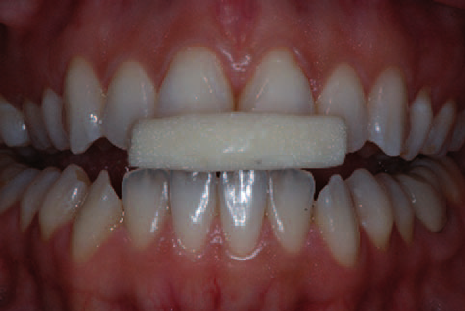
Clinical Benefits of Bruxism Splints
Dental Protection: How Gutters Prevent Tooth Wear
The main benefit of occlusal splints is their ability to protect teeth from excessive wear caused by bruxism. By creating space between the upper and lower arches, these devices absorb the frictional and compressive forces generated by grinding and clenching teeth . This prevents thinning of tooth enamel, cracks, chips, and exposure of the underlying dentin.
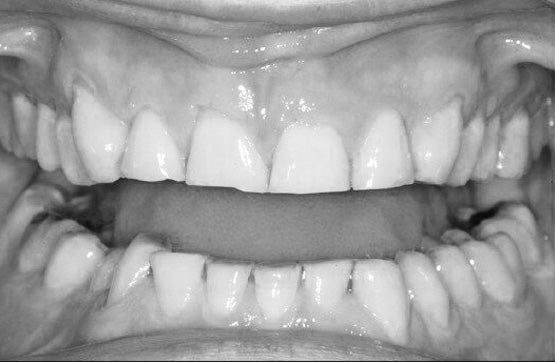
Reduction of Associated Symptoms
The main benefit of occlusal splints is their ability to protect teeth from excessive wear caused by bruxism. By creating space between the upper and lower arches, these devices absorb the frictional and compressive forces generated by grinding and clenching the teeth . This prevents thinning of tooth enamel, cracks, chips and exposure of the underlying dentin.
Disadvantages of Bruxism Mouthguards
Although occlusal splints are widely recommended for the treatment of bruxism , they also have some limitations that should be considered.
Discomfort
Some patients may experience initial discomfort or discomfort when wearing a retainer , especially during the first few weeks of use. Toothache, gum sensitivity, or a tight jaw sensation are sometimes reported. A careful fitting by a professional can help minimize these discomforts.
Maintenance and Hygiene
Regular maintenance of occlusal splints is essential to prevent the build-up of tartar, bacteria and bad odors. Daily cleaning with a toothbrush and antibacterial mouthwash is recommended. Poor hygiene can lead to oral infections or persistent bad breath.
Variable Efficiency
Although occlusal splints are effective in alleviating the symptoms of bruxism, they do not address the underlying causes of the disorder. As such, their effectiveness may vary from patient to patient, depending on specific triggers ( stress , anxiety, occlusion issues, etc.). Additionally, some patients continue to grind or clench their teeth despite wearing a splint .
Instructions for Use and Maintenance
When and How to Wear a Gutter
Most dentists recommend wearing the occlusal splint primarily during sleep, as this is when bruxism is most likely to occur. However, in severe cases, additional daytime wear may be advised for maximum protection .
It is important to follow the practitioner 's instructions regarding the placement and removal of the splint. Improper handling can damage the device or cause pain. In addition, an adaptation period may be necessary before feeling comfortable wearing the splint .
Cleaning and Maintenance
To ensure the effectiveness and hygiene of the occlusal splint, regular cleaning is essential. Here are some tips to follow:
- Gently brush the tray with a soft toothbrush and toothpaste after each use.
- Rinse thoroughly with cold water to remove all residue.
- Soak the tray in antibacterial mouthwash once a week.
- Avoid abrasive cleaning products or high temperatures which could damage the material.
- Store the gutter in a clean, dry container when not in use.
Economic Considerations
Cost and Factors Affecting Price
The cost of an occlusal splint can vary greatly depending on several factors, such as the type of material used, whether it is thermoformed or custom-made , and the reputation of the practitioner or lab that makes it.
In general, thermoformed plastic or silicone aligners are the most affordable options, with prices typically ranging from $50 to $200. On the other hand, custom-made aligners made from acrylic or high-performance materials can cost anywhere from $300 to $800, or even more depending on the complexity of the case.
It is important to note that the least expensive gutters are not necessarily the most economical in the long run, as they may require more frequent replacement due to premature wear .
Reimbursement by Insurance and Mutual Funds
In France, Social Security covers part of the cost of occlusal splints, which are considered medical devices . Reimbursement amounts to 70% of a base of 172.80 euros for the installation of an occlusal release plan , or approximately 120 euros reimbursed [1].
However, this amount does not usually cover the entire cost, especially for custom-made gutters. This is why it is recommended to take out complementary health insurance which will cover the remaining costs.
You can consult the ameli.fr [2] Health Insurance website for more information on reimbursements and the procedures to follow.
New Therapeutic Approach: Gutters and Combined Techniques
Although occlusal splints remain a first-line treatment for bruxism , new approaches combining different techniques are being explored to optimize results.
Integration of Orthodontic Treatments
In some cases, bruxism may be related to underlying dental occlusion problems. By combining the use of a splint with orthodontic treatment to correct tooth alignment, it is possible to achieve lasting improvement in symptoms.
Technological Innovations
Technological advances are also opening up new avenues for bruxism treatment . For example, 3D printing now makes it possible to manufacture custom-made mouthguards with increased precision and high-performance materials. In addition, some devices incorporate sensors to monitor bruxism activity and adjust treatment accordingly.
Among these promising innovations, the Bruxless solution stands out as an innovative alternative to traditional occlusal splints. Developed by a team of oral health experts, this patented device is non-invasive (does not fit in the mouth like a splint) and uses a revolutionary method (Functional Proprioceptive Stimulation or “FPS”) of muscle rehabilitation to treat the root causes of bruxism.
Thanks to its ergonomic design and cutting-edge technologies, Bruxless offers optimal comfort and long-lasting protection against dental wear . But above all, its comprehensive approach aims to re-educate the masticatory muscles and restore a healthy dental occlusion , thus addressing the root causes of the problem rather than simply alleviating its symptoms.
To learn more about this revolutionary solution, please visit our website .
Conclusion
Occlusal splints represent an effective and widely recommended treatment option for bruxism , providing protection against tooth wear and relief from associated symptoms. However, like any medical device , they also have some limitations in terms of comfort, hygiene and long-term effectiveness.
That’s why it’s essential to consult an oral health professional to assess your specific situation and determine the best treatment approach. Whether you opt for a thermoformed or custom-made aligner, be sure to carefully follow the instructions for use and care to maximize benefits and minimize risks.
Finally, don't hesitate to discover the Bruxless innovation, which promises more comprehensive and sustainable management of bruxism by addressing its root causes. Thanks to the integration of the latest technologies and a global approach, our innovative solution offers more effective and comfortable treatment for this all too common disorder.
References: [1] https://www.ameli.fr/assure/remboursements/etre-bien-rembourse/dispositifs-medicaux-bien-rembourses [2] https://www.ameli.fr/
Although bruxism is common, many people don't know they have it until they start experiencing these symptoms.
